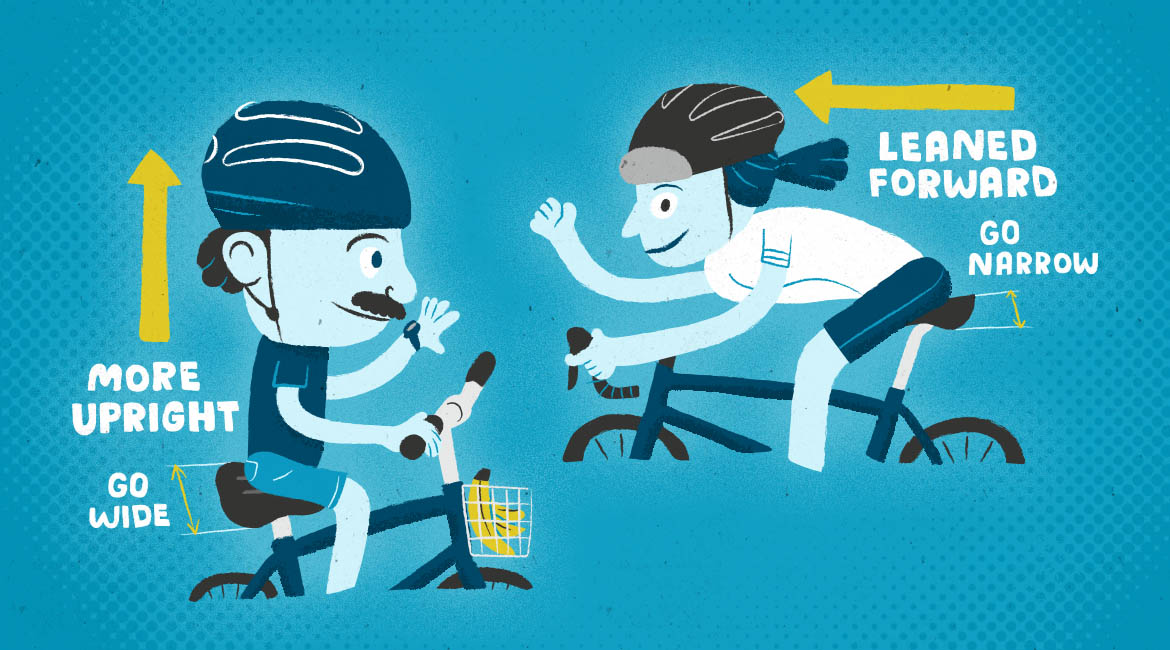Saddle Sores: What They Are and How to Prevent Them
Saddle sores are zero fun. These abrasions or rashes are caused by friction between the bike seat and a cyclist’s body and can be painful.
If left untreated, saddle sores may even require medical treatment. But don’t worry: they’re preventable. By reducing friction using the methods below, you can steer clear of saddle sores.
1. Take it easy.
In the first few days of a bike tour, your excitement can take over. I’ve seen many cyclists push themselves so hard that they wake up a sore mess on day five. Give yourself some low-mileage days at the beginning of your trip to help your body transition into long-distance touring. If you can’t afford to take it slow and have a tight touring deadline, then start training your body months in advance. Your skin and the flesh beneath your pelvic bones need ample time to adjust to your bike seat.
2. Get the right seat.
Choosing the right bike seat has everything to do with knowing what riding position is most common for you. If you tend to sit upright, putting more weight in the saddle, then you’ll want a wider, more padded seat. If you ride with a more aerodynamic approach and lean forward most of the time, then you’ll want a narrower, less padded design.
Also, I recommend choosing a gender-specific saddle. The pelvic regions of men and women are constructed differently, and one seat does not fit all. On that note, your best friend’s favorite saddle may not be the one that’s right for you. We’re all a little different. You can visit your local bike shop for advice and try a variety of saddles.

3. Assume the (correct) position.
If your seat is so high that your hips have to rock back and forth in order to reach the pedals, that’s a fast track to saddle sores. Your pelvis should be as motionless as possible while you ride. Also, minute adjustments in tilting the seat up or down will reduce friction. And whether you’re a ‘seat-slightly-up’ or ‘seat-slightly-down’ cyclist’ can be determined by gender and/or personal preference.
You can adjust your seat yourself, or ask your local bike shop to help you. Even moving the saddle slightly towards the handlebars (or away) can make a huge difference. Keep playing with the seat position until you find that sweet spot. You’ll be glad you took the time to do so.
4. Wear padded shorts.
Cycling shorts are designed to increase your comfort on your bike. This means reducing friction, wicking moisture, keeping your muscles warm, and reducing pressure on your sit bones. (And no, you shouldn’t wear underwear beneath your bike shorts: those seams can lead to chafing.)
5. Use anti-friction creams.
Often called chamois butter, these creams help protect your skin from chafing during long rides. They can be a little messy, and for many new riders, the idea of slathering a foreign substance in such an intimate place is off-putting. But trust me, the benefits are worth it.
6. Change it up.
Once your daily ride is over, change out of your tight cycling clothes into something loose and comfortable. Wash your cycling shorts before wearing them again to reduce any friction from old sweat and grime.
Here’s to a comfortable ride!

